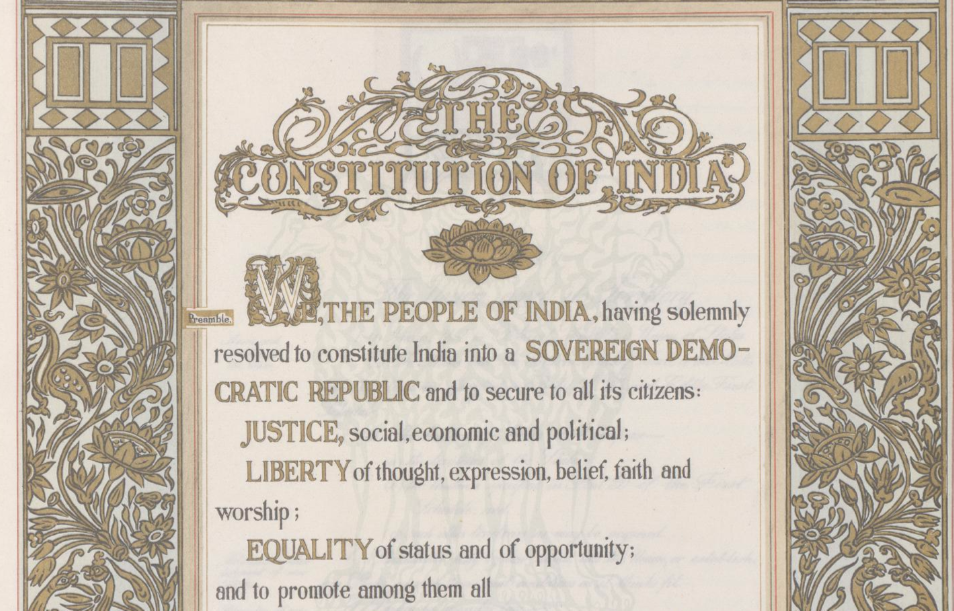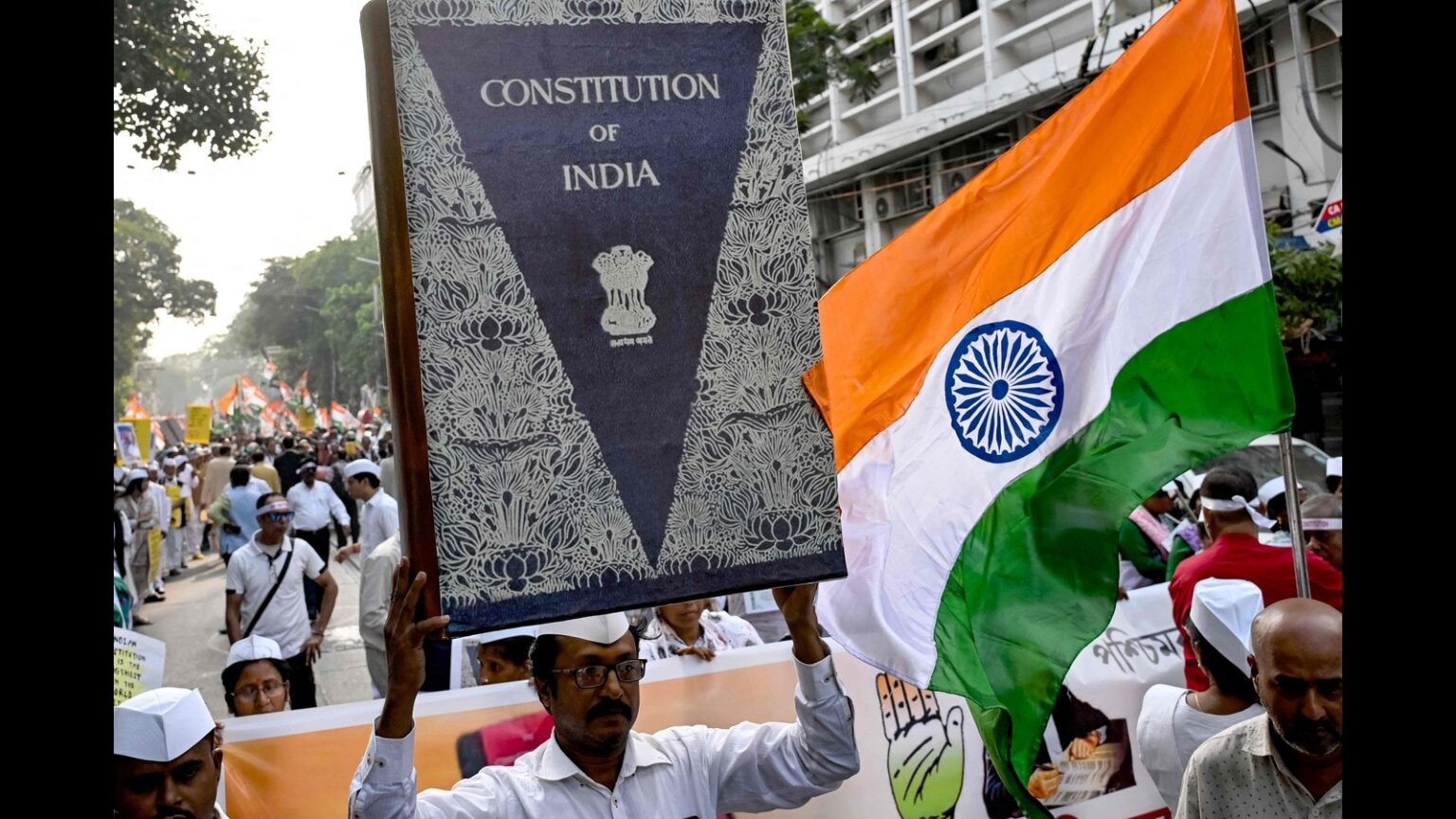The Indian Constitution is not merely a legal framework; it is a profound aesthetic document that reflects the aspirations, diversity, and values of the nation. Drafted with meticulous care, it combines the beauty of language, the depth of philosophy, and the harmony of inclusivity, making it a unique and timeless creation.

Source:- bbc news
At its core, the Constitution is a testament to India’s democratic ethos. The Preamble, with its poetic cadence, encapsulates the nation’s commitment to justice, liberty, equality, and fraternity. Its carefully chosen words evoke a sense of purpose and unity, embodying the dreams of a newly independent India.
Source:- news 18
The aesthetic appeal of the Constitution extends beyond its language to its structure. It elegantly balances individual rights with collective responsibilities, reflecting the harmony between diversity and unity. The fundamental rights and directive principles are thoughtfully designed to empower citizens while guiding the state toward equitable development.
The physical manifestation of the original Constitution adds to its aesthetic value. Written by hand, it features intricate calligraphy and artwork inspired by India’s cultural heritage. The illustrations by Nandalal Bose and his team draw from the country’s rich traditions, making the document not only a legal charter but also an artistic masterpiece.
Its adaptability is another dimension of its aesthetic brilliance. The framers ensured that it could evolve with changing times, making it a living document that resonates with generations. This adaptability reflects the beauty of foresight and flexibility, allowing the Constitution to remain relevant without losing its essence.
In essence, the Indian Constitution transcends its legal significance. It is a symbol of India’s cultural richness, philosophical depth, and democratic ideals. Its aesthetic dimensions make it a source of pride and inspiration, standing as a beacon for governance and harmony.
Share your views in the comments

